Looking to buy your first telescope but don’t know where to start? We’ve picked out some of the best beginner telescopes on the market.
The best telescopes for beginners are those that are easy to set up, won’t stretch your budget and yet give you great views of night sky targets.
But if you’re starting out as a newcomer to astronomy, it can be difficult to know what to look for when buying your first telescope.
Beginners face a seemingly daunting array of different types of telescope, different brands and different price ranges.
It can be difficult to wade your way through the jargon of practical astronomy and work out which is best suited to your observing needs.
There is one simple thing to consider when buying your first telescope, and that’s making sure you get an instrument you’ll actually use.
Jump to:
Best telescopes for beginners, at a glance
After something specific? Jump to some of the best telescopes for beginners on our list via the links below.
- Best budget beginner’s telescope – Celestron StarSense Explorer LT 70AZ
- Best tabletop telescope for beginners – Skymax-127 Virtuoso GTi
- Best budget travel telescope for beginners – Bresser Messier AR-80/640 AZ NANO
- Best tech telescope for beginners – Unistellar eVscope eQuinox
- Best app-control telescope for beginners – Sky-Watcher Star Discovery P150i Wi-Fi
- Honourable mention – Celestron Inspire 100AZ Refractor
Key advice and more info
The best telescopes for beginners are easy to use and set up.
If your first telescope is too large and unwieldy or requires a lot of tinkering, you’ll be put off.
You may find it difficult to transport and your scope could be consigned to the garden shed or garage, never to be used again.
Join your local astronomy society, attend a star party or find your nearest astronomy kit stockist.
Speak to people who know best, and you may even get the chance to try before you buy.
Have a look at our pick of some of the best telescopes beginners below.
For more detailed help you can also read our guides to choosing your first telescope and how to spend your first night with a telescope.
If you think you might be interested in learning how to image the night sky, read our guide to the best telescopes for astrophotography.
If you’re on the lookout for a mount to go with your new telescope, read our guide to the best telescope mounts available.
Best telescopes for beginners
Skymax-127 Virtuoso GTi tabletop telescope
Best tabletop telescope for beginners

Key specs
- Design: Maksutov-Cassegrain altaz Go-To Wi-Fi tabletop telescope
- Optics: 127mm (5-inch) primary mirror
- Focal length: 1,500mm, f/11.8
- Mount: Wi-Fi, computerised, altaz and single-arm
- Ports: Power connector, camera port, hand-controller port, integrated Wi-Fi adaptor, on-off switch
- Tracking rates: Sidereal, lunar, and solar; alignment free
- Extras: Red-dot finder, 25mm and 10mm 1.25-inch-fit eyepieces, spirit level
- Weight: 10kg (total kit weight)
Read our full Skymax-127 Virtuoso GTi tabletop telescope review.
Celestron StarSense Explorer DX 130AZ 5.1-inch
Buy from B&H, Amazon, Picstop and Clifton Cameras
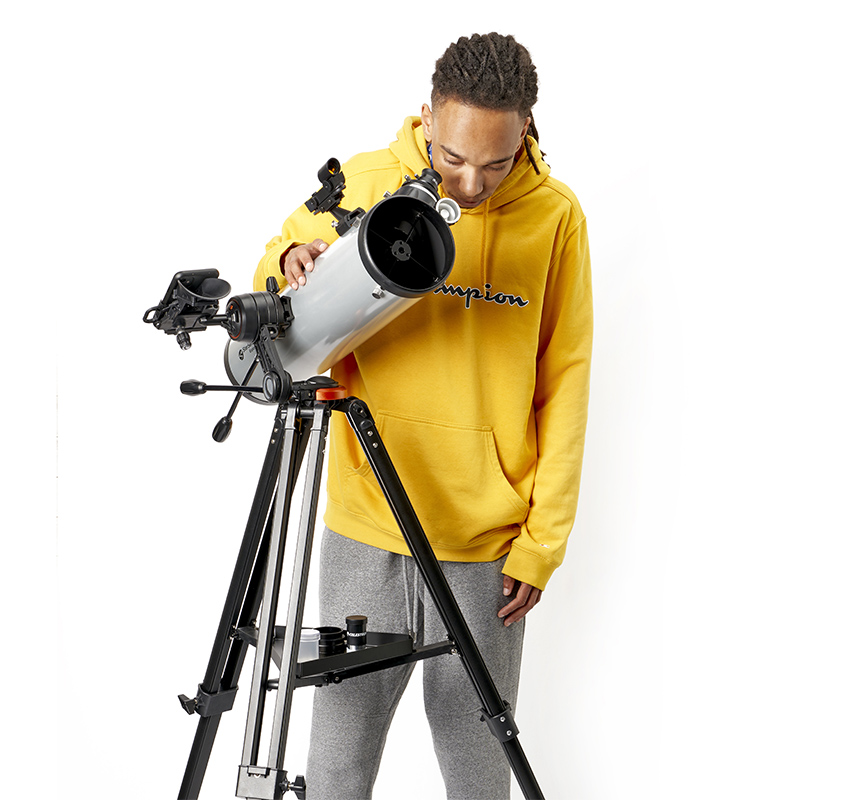
Key specs
- Optics: 130mm (5.1-inch) Newtonian reflector
- Focal length: 650mm, f/5
- Mount: Altaz with slow-motion controls
- App control: StarSense Explorer app with StarSense Sky Recognition technology and planetarium
- Extras: StarSense dock for your smartphone, 25mm and 10mm eyepieces, StarPointer red dot finder
- Weight: 8.1kg
Read our full Celestron StarSense Explorer DX 130AZ 5.1-inch review.
Sky-Watcher StarQuest 130P Newtonian reflector
Buy it from Wex

Key specs
- Optics 130mm (5.1-inch) parabolic mirror
- Focal length 650mm (f/5) focal length
- Mount Equatorial/altazimuth mount
- Focuser Rack and pinion
- Extras Red dot finder, 1.25-inch 10mm and 25mm eyepieces, slow-motion control cables
- Weight 8kg
Read our full StarQuest 130P Newtonian review.
Acuter Voyager MAK80 telescope

Key specs
- Design: Maksutov-Cassegrain telescope
- Optics: 80mm (3.15-inch) primary mirror
- Focal length: 800mm, f/10
- Mounting: 45mm Vixen-style Sky-Watcher dovetail bar with standard ¼-inch tripod thread
- Extras: 8x 21mm finderscope; 20mm and 10mm 1.25-inch eyepieces; star diagonal; smartphone; adaptor; carry case; giftbox
- Weight: 1.8kg
Read our full Acute Voyager MAK 80 telescope review.
WideSky 80 refractor

Key specs
- Optics: ED doublet with fully multi-coated Ohara FPL-53 glass
- Aperture: 80mm
- Focal length: 500mm, f/6.25
- Focuser: Heavy duty dual-speed 2-inch rack and pinion hybrid drive with 10/1 (ratio from coarse to fine) and brass compression ring
- Extras: Retractable dew shield, 2- to 1.25-inch adaptor, aluminium case, Vixen-style dovetail-profile mounting foot
- Weight: 2.9kg
Read our full WideSky 80 refractor review
Celestron StarSense Explorer LT 70AZ refractor
Best budget beginner’s telescope
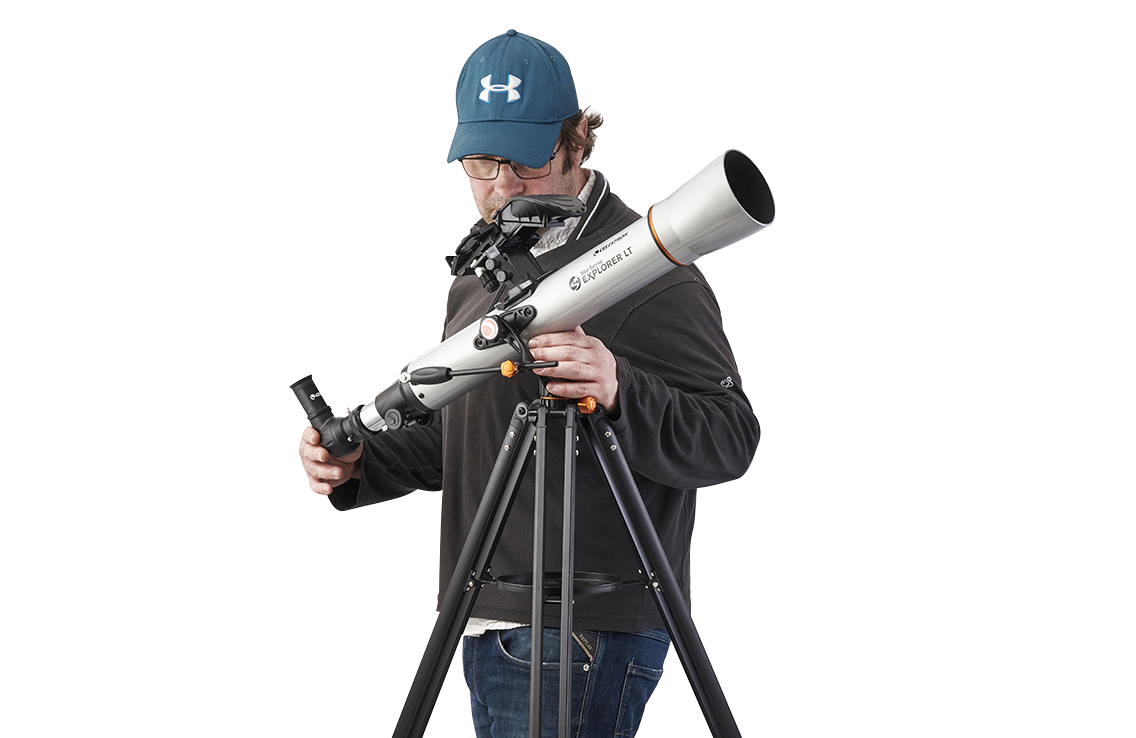
Key specs
- Optics 70mm fully coated objective lens
- Focal length 700mm, f/10
- Mount Manual altazimuth mount with smooth, altitude slow-motion control
- App control StarSense app with StarSense sky recognition technology and planetarium
- Extras StarSense dock for your smartphone, 25mm and 10mm eyepieces,2x Barlow lens, 90º erect image diagonal, StarPointer red dot finderscope
- Weight 3.35kg
Read our full Celestron StarSense Explorer review.
Sky-Watcher Heritage 100P Tabletop Dobsonian

Key specs
- Aperture 100mm (4-inch)
- Focal Length 400mm (f/4)
- Mount Wooden altaz
- Weight 2.8kg
Read our full Sky-Watcher Heritage 100P review
Celestron Omni XLT AZ 102 refractor with basic mount
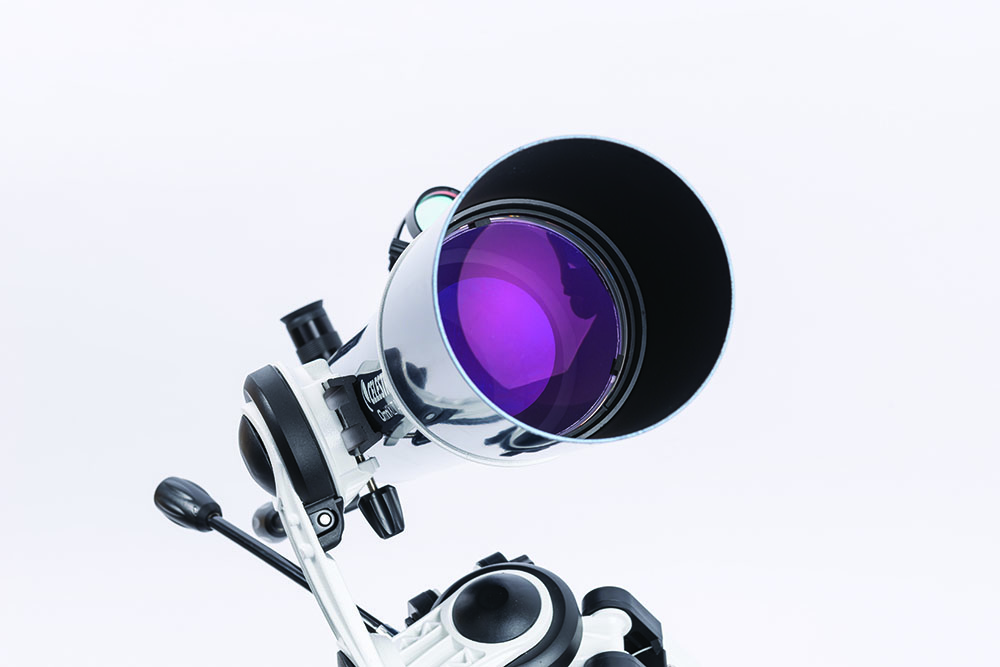
Key specs
- Aperture 102mm (4 inches)
- Focal Length 660mm (f/6.5)
- Weight 6.2kg
Read our full Celestron Omni XLT AZ review here
Bresser Messier AR-80/640 AZ NANO Telescope
Best budget transportable telescope
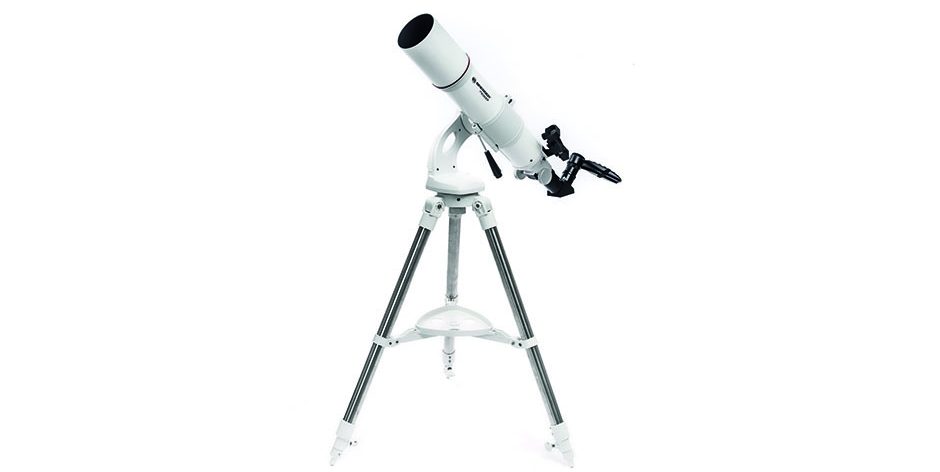
Key specs
- Focal Length 640mm (f/8)
- Mount Twilight Nano altaz
- Weight 5kg
Read our full Bresser Messier AR-80/640 review
Celestron Inspire 100AZ Refractor
Honourable mention: classic telescope for beginners

Key specs
- Optics Achromatic lens
- Aperture 100mm (4 inches)
- Focal Length 660mm, (f/6.5)
- Focuser Single-speed rack and pinion with micrometer scale
- Mount Manual Altazimuth
- Extras Red-dot finder, erect image star diagonal, 10mm and 20mm eyepieces, red light LED torch, printed instruction manual
- Weight 6.1kg
Read our full Celestron Inspire 100AZ review
Meade Lightbridge Mini 130 Dobsonian

Key specs
- Aperture 130mm (5.1 inches)
- Optics Parabolic mirror
- Focal length 650mm (f/5)
- Mount Wooden altaz
- Extras Red-dot finder, 9mm and 26mm eyepieces (1.25-inch fit), Autostar software
- Weight 6.1kg
Read our full Meade Lightbridge Mini 130 review
Sky-Watcher EVOSTAR-90 (AZ PRONTO) with mount

Key specs
- Aperture 3.5-inch
- FocalLength 900mm (f/10)
- Mount AZ Pronto
- Weight 6.25kg (tube 2.4kg, mount and tripod 3.85kg)
- Supplier Optical Vision
Read our full Sky-Watcher EVOSTAR-90 review
Sky-Watcher SkyHawk 1145P SynScan altaz Go-To Newtonian
Buy it from Wex

Key specs
- Optics Parabolic Newtonian
- Aperture 114mm (4.5 inches)
- Focal length 500mm (f/5)
- Finderscope 6×24 finderscope
- Mount Computerised altaz HD Go-To
- Eyepieces 10mm and 25mm, both 1.25-inch fit
- Extras 2x Barlow lens, 1.25-inch fit
- Weight 6.3kg
Read our full Sky-Watcher SkyHawk 1145P review
Celestron 114LCM computerised telescope
Buy it from Clifton Cameras

Key specs
- Focal length 1000mm (f/9)
- Weight 5kg (OTA 2kg)
Read our full Celestron 114LCM review.
Sky-Watcher Heritage 150P Flextube Dobsonian
Buy it from Wex
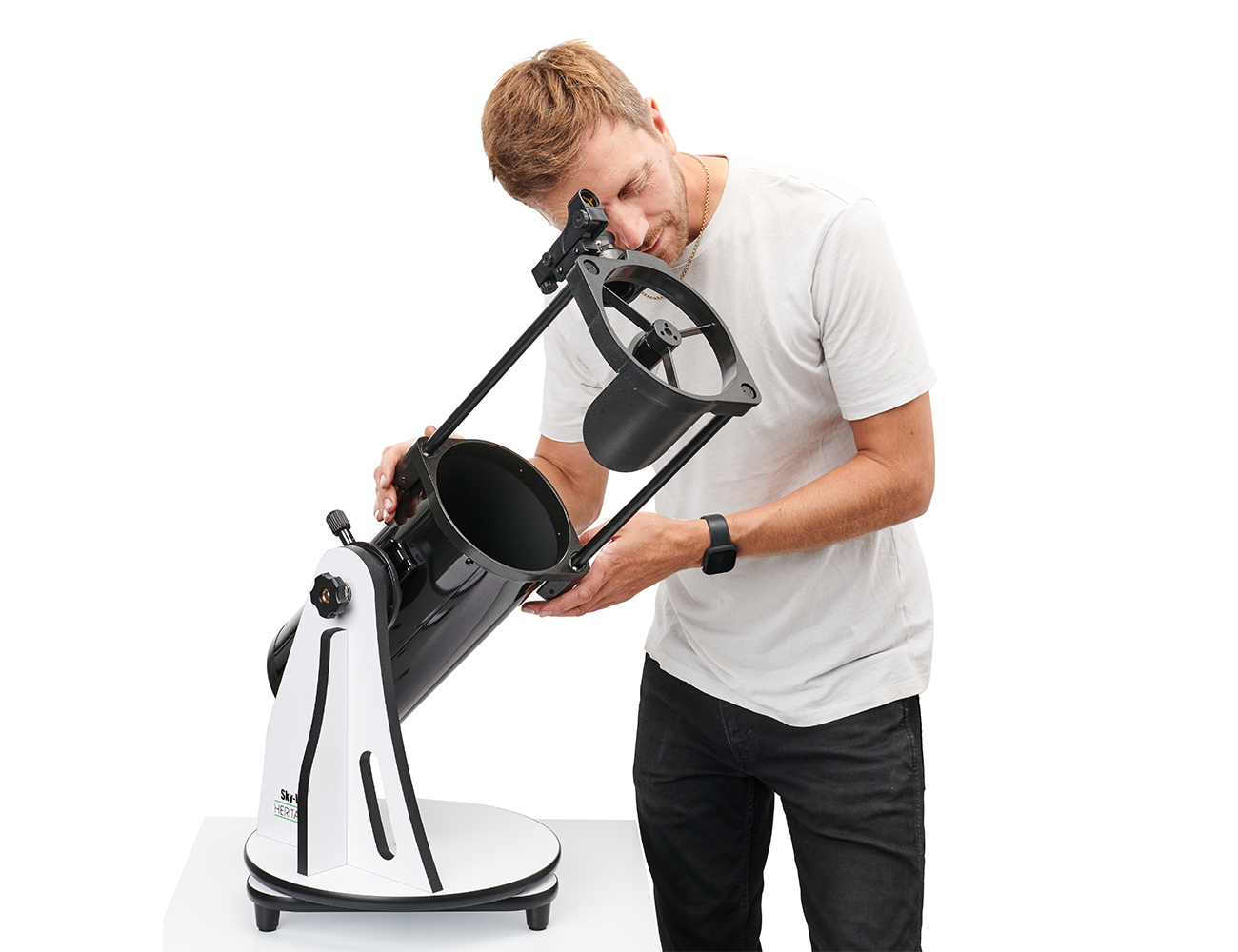
Key specs
- Optics 150mm (6-inch) parabolic mirror
- Focal length 750mm (f/5)
- Mount Single-arm, wooden altazimuth Dobsonian mount
- Focuser Rack and pinion
- Extras red dot finder, 1.25-inch 10mm and 25mm eyepieces
- Weight 7.5kg
Read our full Sky-Watcher Heritage 150P review.
Sky-Watcher Star Discovery P150i Wi-Fi telescope
Best app-controlled telescope for beginners
Buy it from Wex

Key specs
- Design Newtonian altaz, Go-To, Wi-Fi-controlled telescope
- Optics 150mm (6-inch) parabolic primary mirror
- Focal length 750mm, f/5
- Mount Wi-Fi, computerised, altaz, single-fork arm
- Ports Power connector, camera, hand-controlller, integrated Wi-Fi adaptor
- Tracking rates Sidereal, Lunar and Solar
- Tripod Adjustable with accessory tray
- Extras Red dot finder, 25mm and 10mm 1.25-inch fit eyepieces, bubble level
- Weight 8kg
Read our full Sky-Watcher Discover P150i Wi-Fi review.
Starbase 80 refractor and mount package
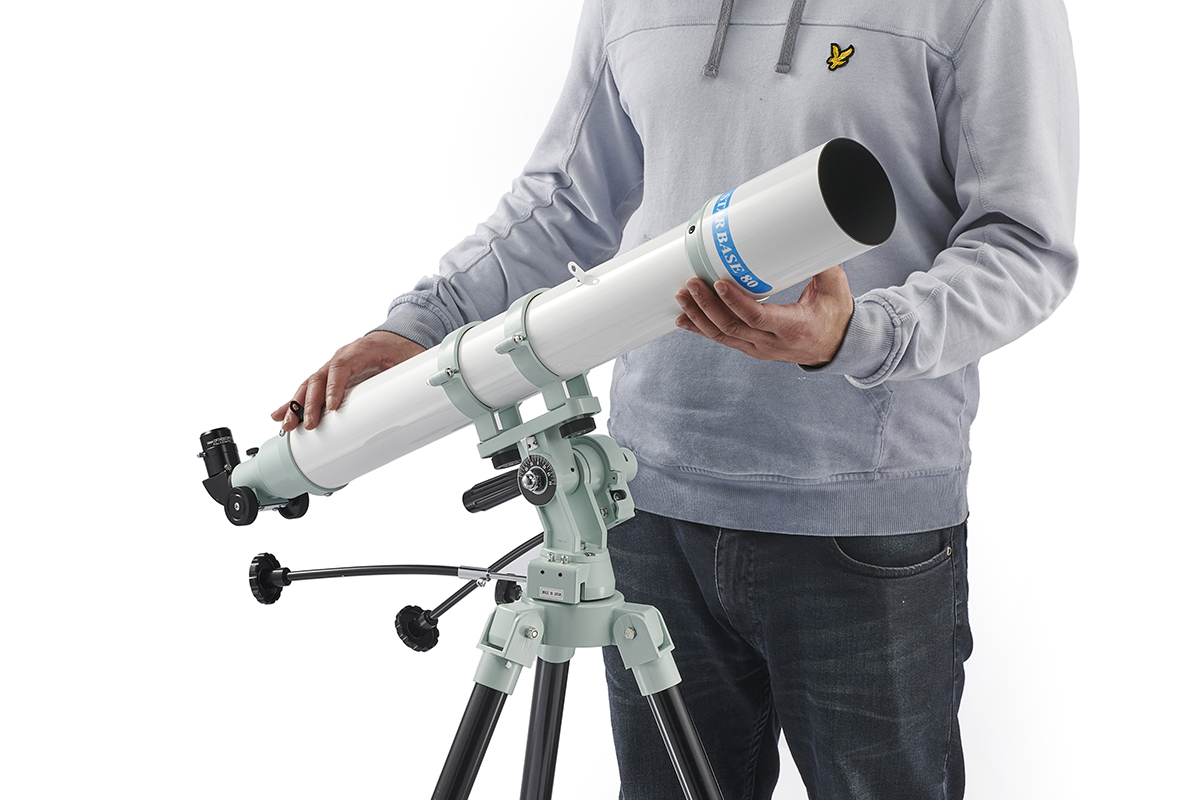
Key specs
- Optics 80mm
- Focal length 800mm (f/10) focal length
- Mount Altaz mount with adjustable steel tripod
- Focuser Rack and pinion
- Extras Peep hole finder, 6mm & 14mm 1.25 inch-fit eyepieces, smooth slow-motion control cables, star diagonal and accessories tray
- Weight 6kg
Read our full Starbase 80 refractor and mount package review.
Sky-Watcher Explorer 130P AZ GO-2
Buy it from Wex
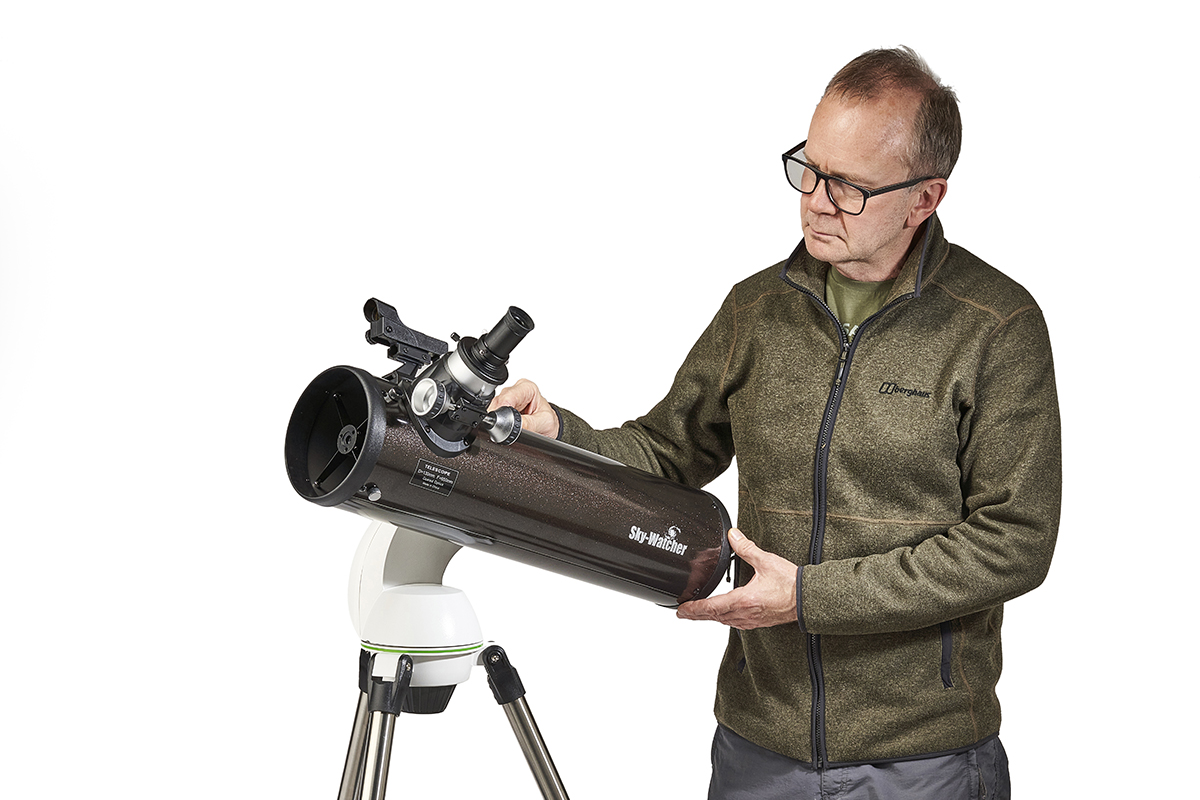
Key specs
- Optics: Newtonian reflector, parabolic primary mirror
- Focal length: 650mm, f/5
- Mount: Wi-Fi Go-To altazimuth
- Extras: Red dot finder, 25mm and 10mm eyepieces, 2-inch eyepiece adaptor, SynScan app, Vixen-style dovetail, tripod, battery box and pouch, compass, manual
- Weight: 8.4kg
Read our full Sky-Watcher Explorer 130P AZ GO-2 review
Unistellar eVscope eQuinox telescope
Best high tech telescope for beginners
Buy it from Amazon USA

Key specs
- Optics 114mm (4.5-inch) reflector
- Focal length 450mm, f/4
- Sensor Sony Exmor IMX224
- Mount Motorised single-arm, altaz, Go-To
- Power In-built lithium-ion rechargeable (12-hour) battery
- Tripod Aluminium, adjustable height
- Ports USB-C for power, and USB-A for charging a smartphone
- App control Unistellar app for smartphones
- Weight 9kg
Read our full eVscope eQuinox review.
Vaonis Vespera Observation Station
Buy from Clifton Cameras, Adorama (US)

Key specs
- Optics: Apochromatic quadruplet refractor
- Focal length: 200mm, f/4
- Sensor: Sony Exmor IMX462 CMOS
- Mount: Motorised single arm, altaz, Go-To
- Power: 7,000mAh lithium-ion rechargeable battery
- Tripod: Tabletop aluminium, fixed height
- Ports: Proprietary USB-C for charging, Wi-Fi
- App control: Singularity
- Weight: 5kg
Read our full Vaonis Vespera Observation Station review
How we test the best telescopes for beginners
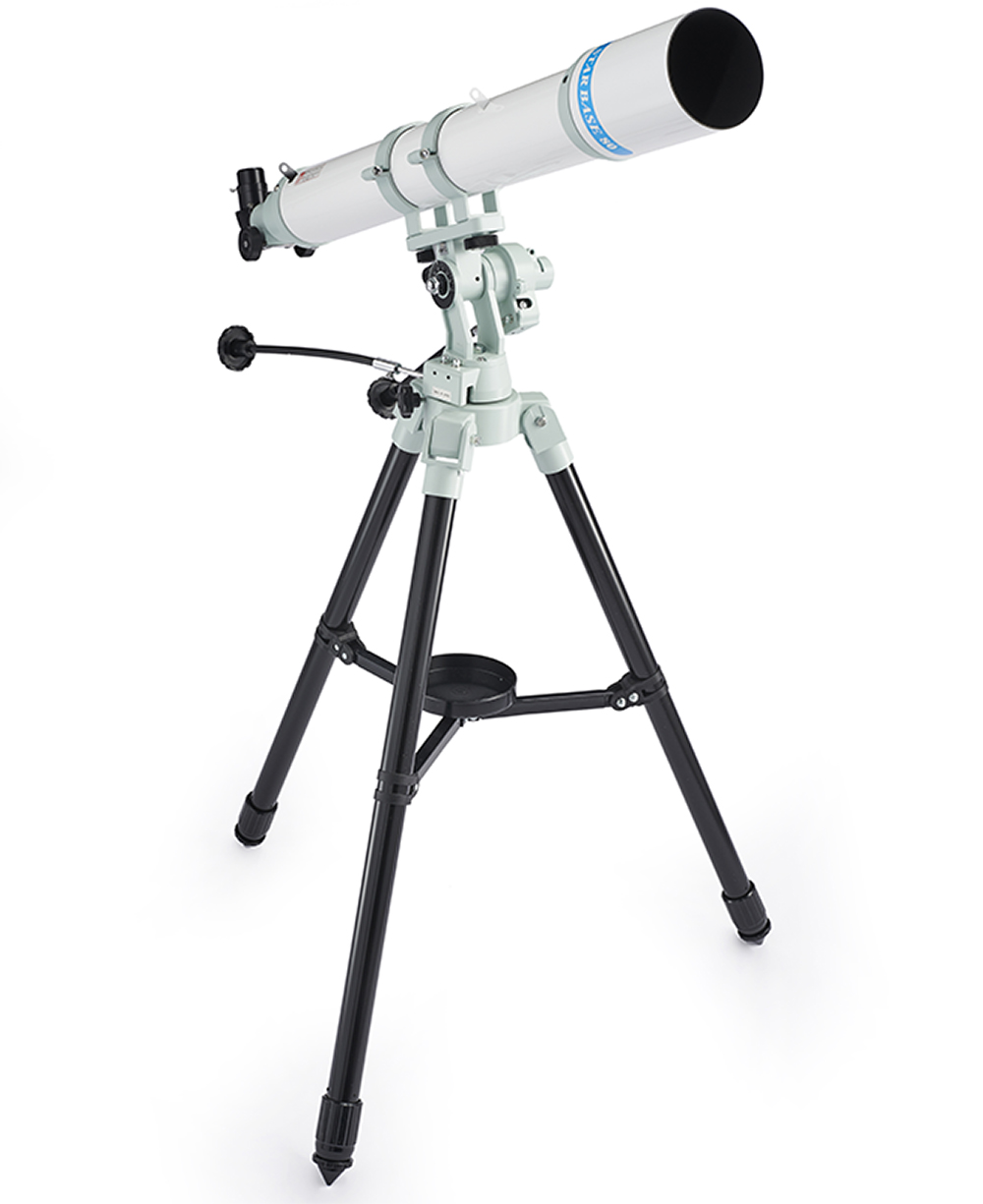
The telescopes on our list were tested using the same criteria: assembly, build and design, ease of use, features and optics. The features we looked at included:
Finderscope
Finding what you want to look at is the first step, so we examined the finderscopes supplied, testing how easy they were to use. We checked whether they were awkward to look through and if they were easy to align with the main scope.
Focuser and eyepieces
Fine focusing is vital for sharp views, but the focuser shouldn’t be too stiff or have too much play in movement. We also inspected the eyepieces to see if they provided a useful range of magnifications.
Mount
We checked that the mount was sturdy enough to support the telescope and had no play in either of the axes. The telescope should be able to move freely to take in as much of the sky as possible without being hindered by the tripod.
Optics
It goes without saying that the best telescopes for beginners will have good optics. Optical surfaces should be free from defects, so we looked for imperfections on the front objective lens. Using the supplied eyepieces, we checked to see if the optics gave crisp views at the centre and at the edge of the field of view.
Tripod
We looked at how stable the tripod was as the telescope was moved into various observing positions. The legs need to be steady with little flexure, and any vibrations should quickly dampen down otherwise they could spoil the view.
What are your recommendations for best beginners’ telescopes? Let us know by emailing contactus@skyatnightmagazine.com or via Facebook, Twitter or Instagram.